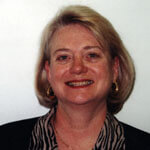
Toddlers adopted from orphanages in Russia … adults re-entering the work force after a traumatic brain injury … children on the Texas-Mexico border in a Head Start program. Wherever people are learning how to adjust to the demands of daily living, occupational therapists are assessing problems and providing solutions.
Aida Orozco and Andrea Santos, two Laredo natives who are students in the master of occupational therapy (MOT) degree program at the Health Science Center, say they are excited about their upcoming fieldwork in Laredo and San Antonio. Both plan to return to Laredo after graduation in 2006 to help alleviate the lack of occupational therapists in the rapidly growing border city.
Orozco, a 1998 Laredo Martin High School graduate who is pursuing her MOT after taking prerequisite courses at Laredo Community College and The University of Texas at San Antonio, plans to gain her first field experience at the Ruthe B. Cowl Rehabilitation Center in Laredo. She will be involved with Laredo children at the day care/learning center.
Santos, a 2000 J.B. Alexander High School graduate who went to the same two institutions before entering the MOT program, plans to do her field experience first in the Northside Independent School District in San Antonio and then at the Cowl Center in Laredo.
April is Occupational Therapy Month, and OT is one of the hottest job markets among health professions today, says Gale Haradon, Ph.D., OTR, FAOTA, professor and chair of the department of occupational therapy at the Health Science Center.
“The OT works with people throughout the life span, including those facing developmental issues, daily living challenges in school or work, and loss of independence,” Dr. Haradon says. “There are so many jobs open that our students are getting offers before they graduate. We even need more applicants to our degree programs at the Health Science Center.”
This past fall and spring, first- and second-year MOT students screened children for developmental delays and presented educational content about occupational therapy interventions to teachers and parents at the San Felipe Del Rio Consolidated ISD Head Start Program in Del Rio. The Del Rio teachers responded very positively to the students’ presentations about sensory/motor activities that teachers could implement to improve preschoolers’ readiness for education. Thirty-eight MOT students traveled to the Del Rio program four times at their own expense under the guidance of faculty members Karin Barnes, Ph.D., OTR, and Alison Beck, Ph.D., OTR.
Disease states and congenital deficits are but two of the many possible obstacles to proper development. The occupational therapist’s contribution to a well-prepared child might be to assess whether the child can open a milk carton, hold a pencil correctly, dress correctly, or write letters and numbers. “We call it ‘inclusion’ – bringing a child to where he or she needs to be to function well in a classroom,” Orozco says.
Orozco and Santos have a great role model in Dr. Haradon. Her own work with Romanian orphans in the 1990s led her to survey U.S. adoptive parents of orphaned Russian children about their children’s sensory responses. The results, which she will present in May at the American Occupational Therapy Association’s Annual Conference in Long Beach, Calif., reveal that internationally adopted children exhibit definite differences in their sensory processing profiles for auditory, visual, movement, touch and other behaviors as a result of their early lives in orphanages. She has surveyed parents of 46 internationally adopted orphans from the United States and Canada in conjunction with her Canadian collaborator, Jennifer Smart, M.Sc., OT Reg. (Ont.), of Dalhousie University in Halifax, Nova Scotia. Their work may lead to ways to help these children.

